how to find what reference line in tableau
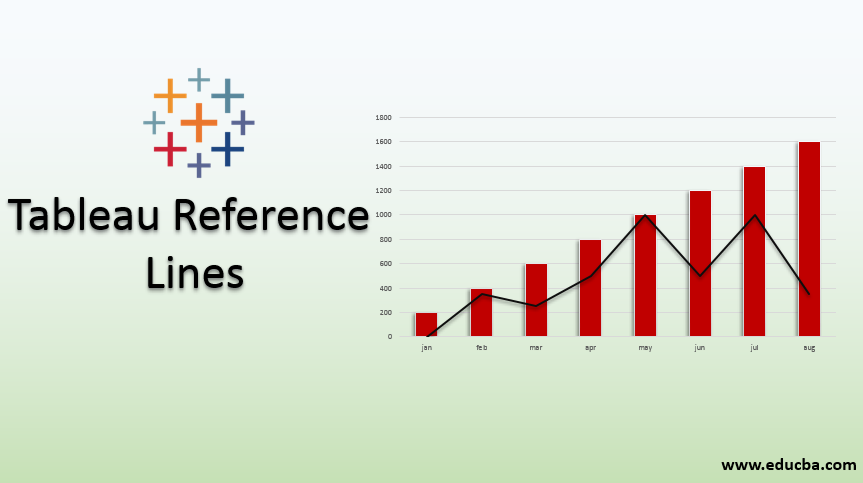
Introduction to Tableau Reference Lines
Tableau Reference Lines are the identifiers for result comparing and assay. It can be added to the centrality for referencing the constant value or the calculated value. The reference lines can too be associated with confidence intervals in Tableau. An example scenario for the reference lines in the visualization is adding a reference line for sales boilerplate equals to $90000 across multiple customer segments in the ii-dimensional bar chat representation. Tableau reference lines can be customized and practical based upon the business requirements. Some of the aggregations the reference lines support such equally sum, boilerplate, total, constant, maximum, minimum and median.
How to Use Reference Lines?
Following are the Footstep to use Tableau Reference lines:
Step one: Log in to Tableau Desktop or Public.
Step ii: Connect to the Database.
Step 3: Elevate Region Dimension to Columns, Turn a profit Measures to Rows. Y'all will go a below prototype (select bar chart – equally you lot desire nautical chart type)
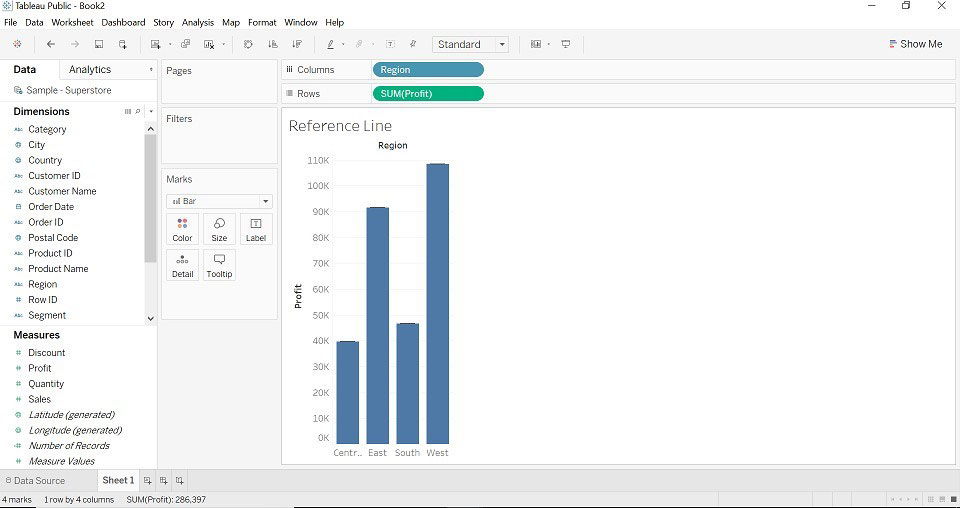
Step 4: Elevate Reference Line from Analytics into the views.
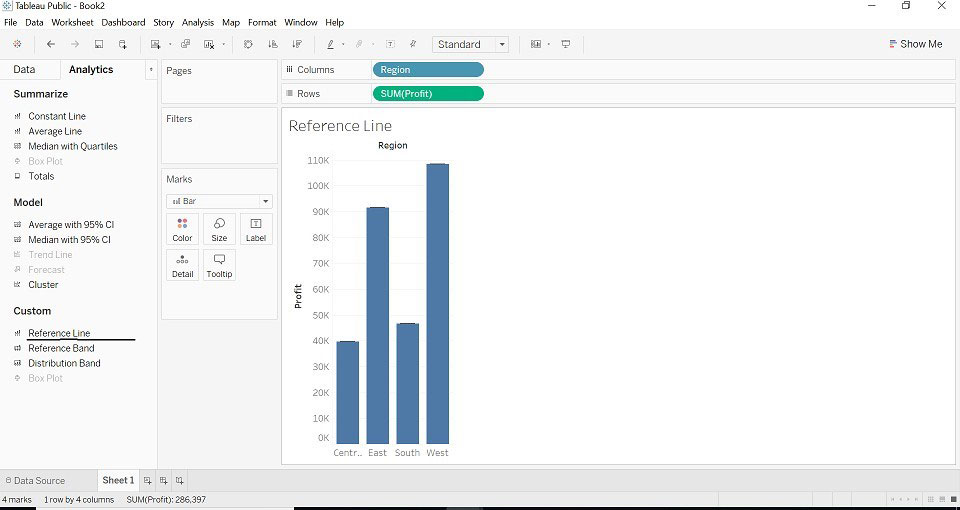
Step five: Tableau will show the possible range of choices varies depending on the type of item and current views.
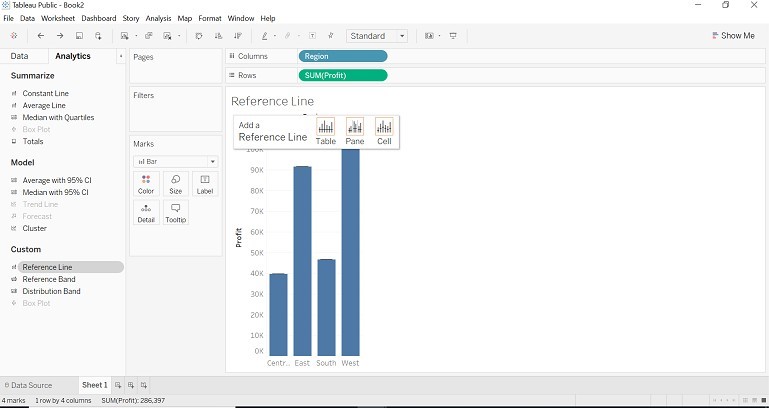
Footstep vi: The line volition testify three different scopes for the item.
- Unabridged table
- Per pane
- Per cell
Entire Table
- When nosotros select telescopic as the Entire Table, Tableau will perform aggregation for the entire table. Telescopic as an Entire Table volition add a reference line to the entire table.
- Look at the average on the bar chart.
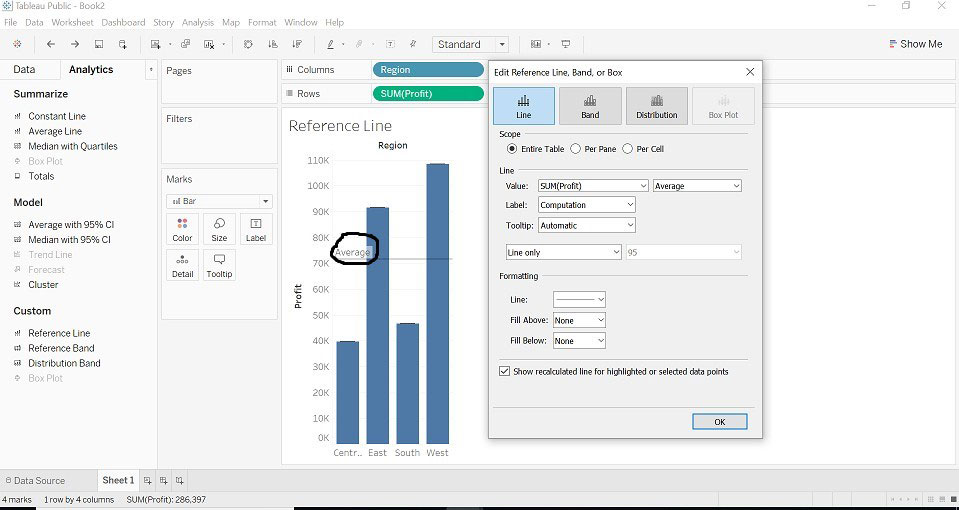
Per Pane
- When we select Telescopic equally Per pane, Tableau calculates assemblage for each pane. Scope as Per Pane will add a reference line to each pane.
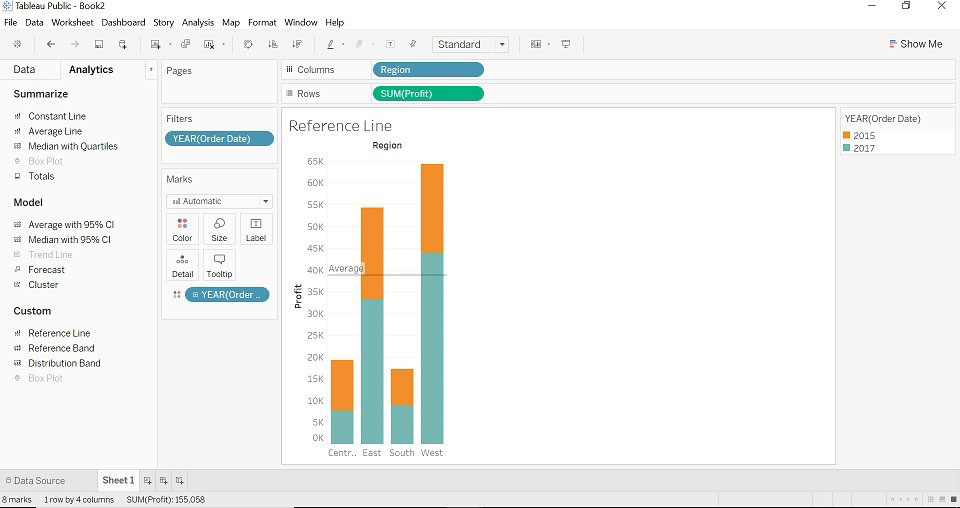
Per Prison cell
- When we select Scope every bit Per Jail cell, Tableau calculates aggregation for each cell for the selected table. Scope as Per Cell adds a reference line to each cell.
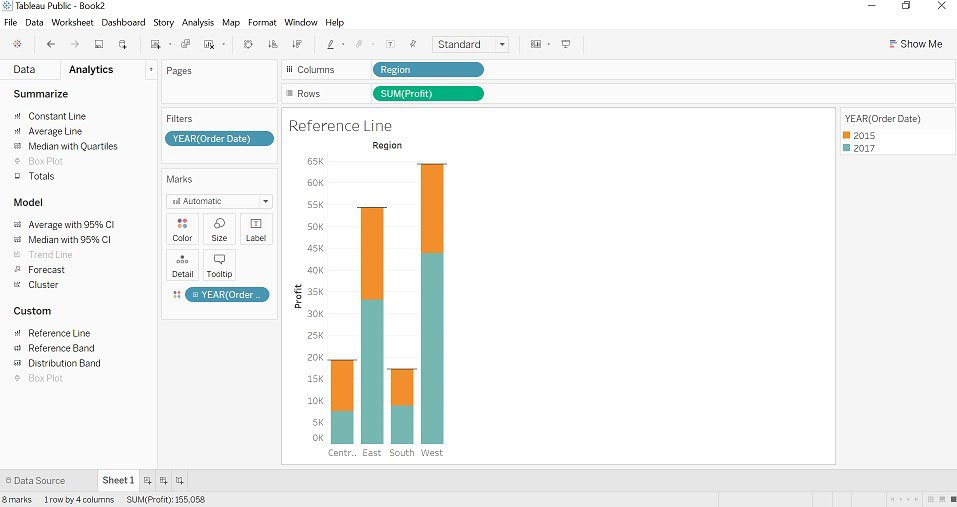
Aggregations Present for the Reference Line
Post-obit are the line below:
- Total: Total will position line at the aggregation of all the values of a specific measure. (profit)
- Sum: Sum will position line at the sum of the selected measure. (Turn a profit)
- Constant: Constant will position line at the constant value which is specified.
- Maximum: Maximum will position line at the maximum of the specific measure. (Profit)
- Minimum: Minimum volition position line at the minimum of specific measure out. (Profit)
- Average: Boilerplate will position line at the minimum of specific mensurate. (Profit)
- Median: Median will position line at the median of the specific measure. (Profit)
When we select an aggregation as per aggregation type, we want, we tin can see the result past keeping the cursor on the reference line (reference line will appear as per the unabridged table, per jail cell, per pane). Look at the images below, you volition get an idea near each aggregation).
ane. Full
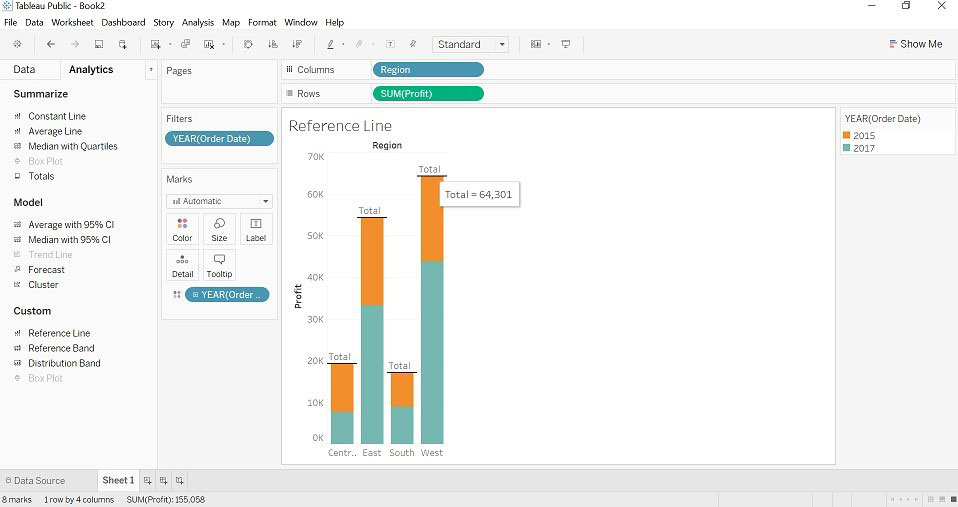
2. Sum
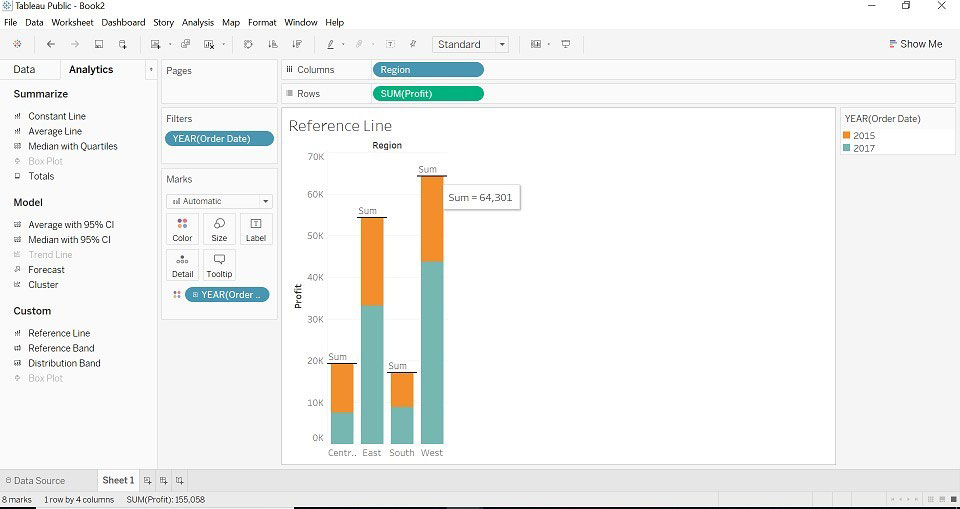
3. Constant
Await at the number present in each bar (the number is abiding value).
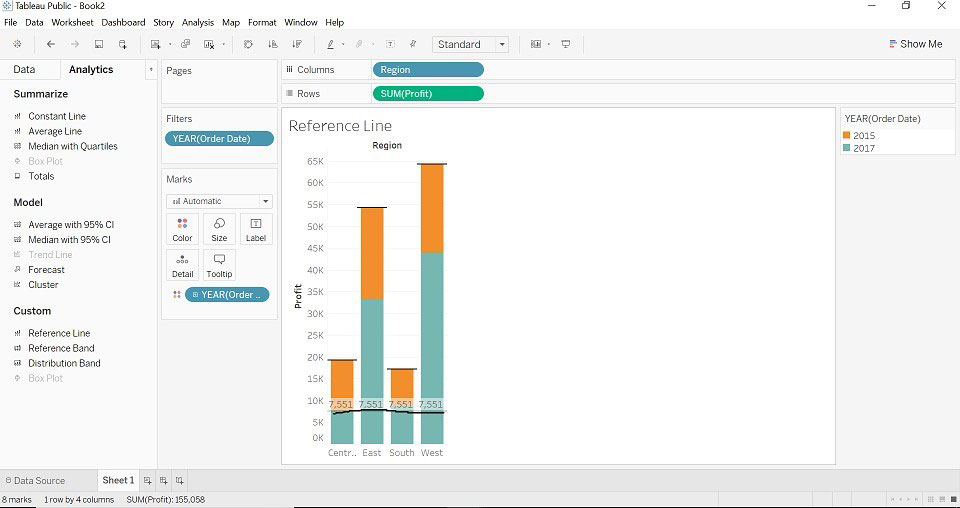
4. Maximum
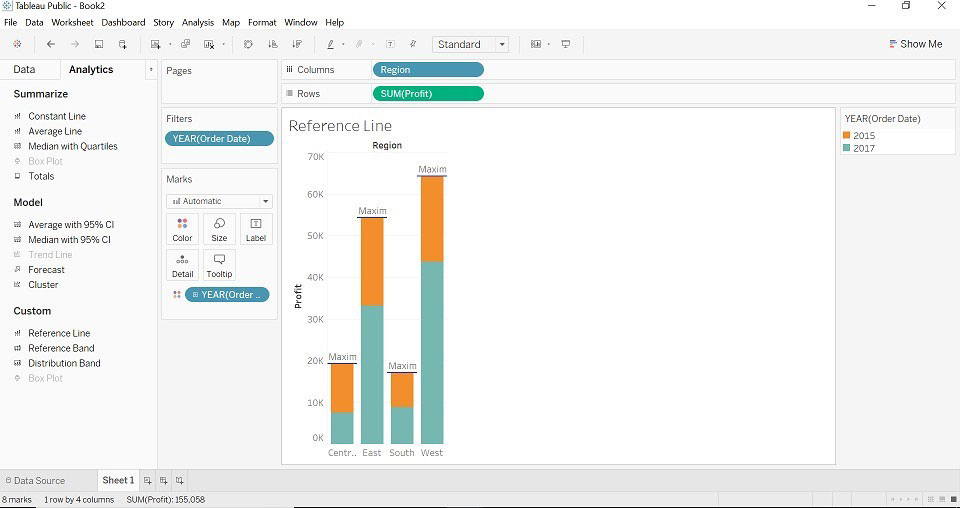
5. Median
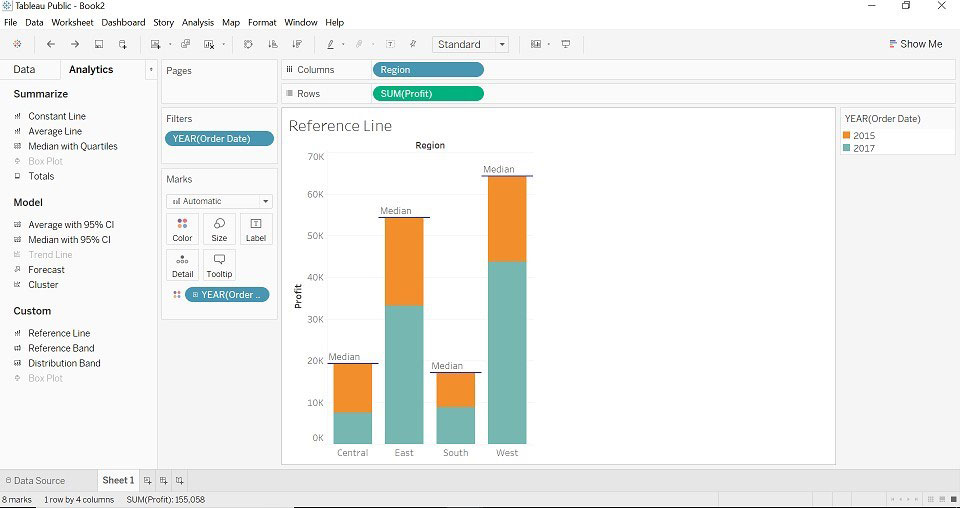
half dozen. Minimum
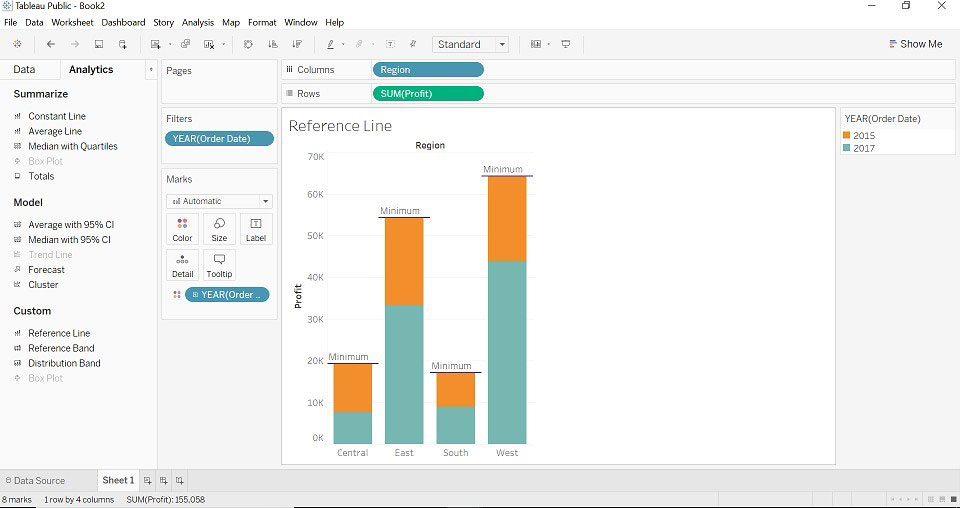
7. Label
This option allows you to configure whether you want to run across the characterization or not. It has different fields.
- None: This option does non bear witness any label to the reference line.
- Value: This option will show the aggregation of the values of the specific measure as a characterization to the reference line.
- Computation: This selection will bear witness the aggregated function proper name every bit a label proper name to the reference line.
- Custom: This option will evidence the custom value which is specified by you in the text box as the label to the reference line.

For Example:Nosotros have selected Characterization as Value and Assemblage as Maximum and Scope as an Entire Table. The maximum value is 64,301.
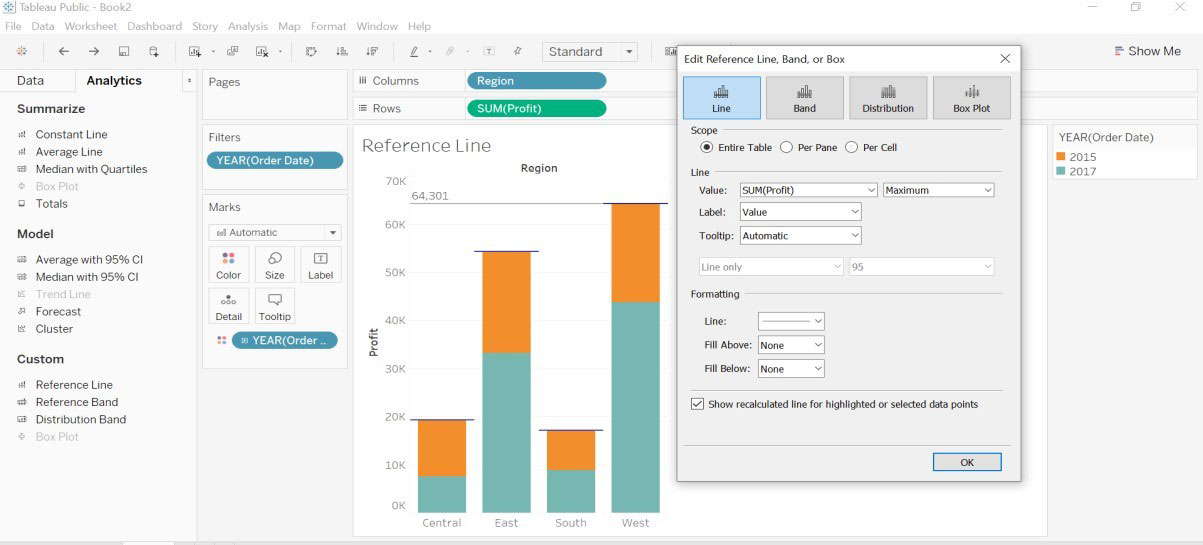
viii. Formatting
We can utilize the formatting choice to format the reference line, color, width, and background color- in a higher place(fill above) the region and below the region(fill below).
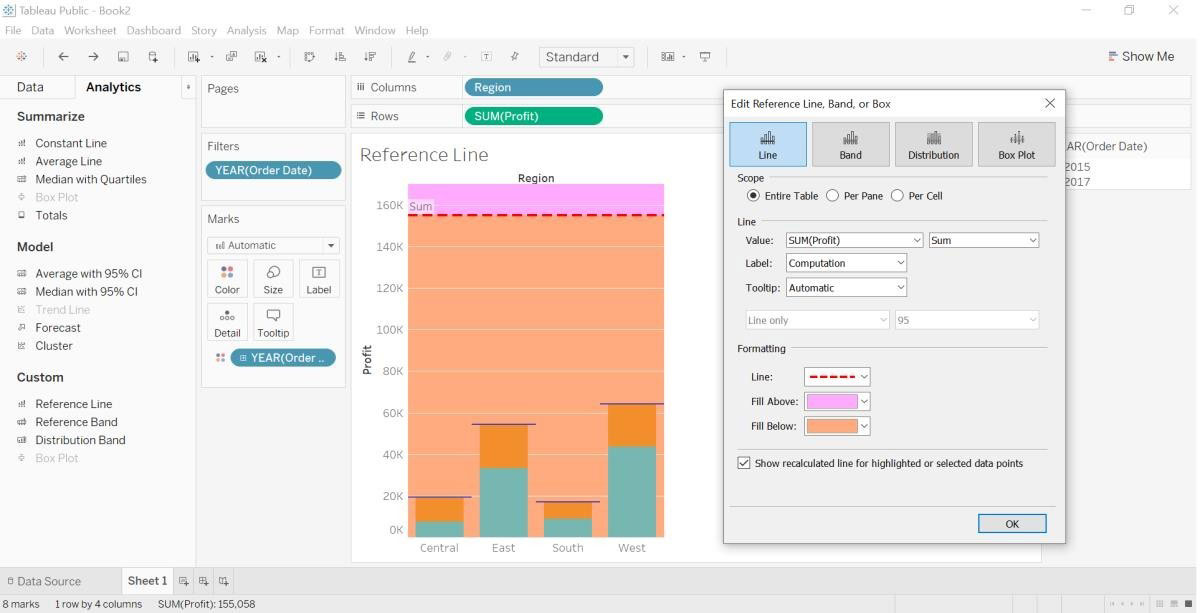
9. Remove Reference Line
Right-click on the Profit axis, it will open the menu and select Remove All Reference Lines.

- If your study has simply one reference line, and then choose the Remove Reference Line option.
- If your study has more than ane reference line, then cull the Remove Reference Line option and choose the reference line you want and this volition delete the selected reference line.
- If your written report has multiple reference lines and you want to remove all the reference lines at one time merely, then cull Remove All Reference Lines option.
Recommended Articles
This is a guide to Tableau Reference Lines. Here we discuss how to apply Tableau Reference Lines step past stride and aggregation in Tableau Reference Lines. You can as well go through our other related articles to learn more-
- Parameters in Tableau
- Tableau Charts
- Treemap in Tableau
- Pivot Tabular array Examples
- Rank Function in Tableau
- Tableau Context Filter
Source: https://www.educba.com/tableau-reference-lines/
0 Response to "how to find what reference line in tableau"
Post a Comment